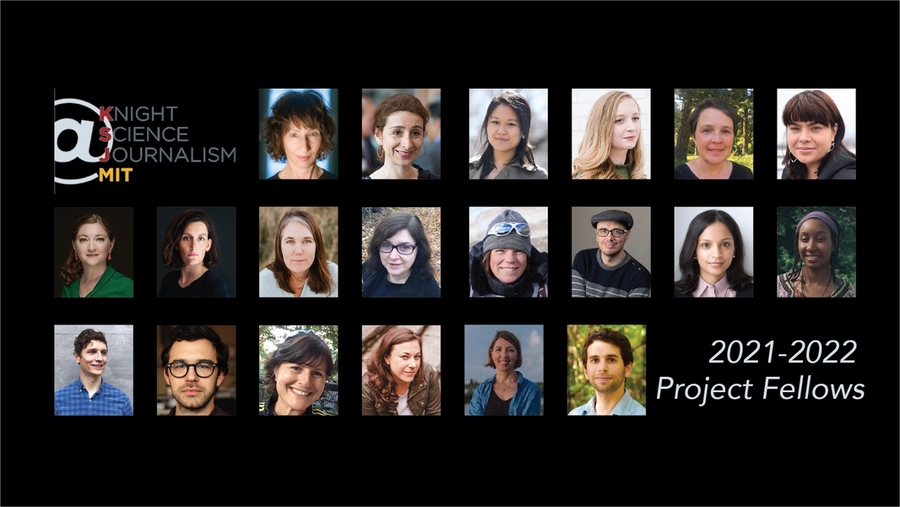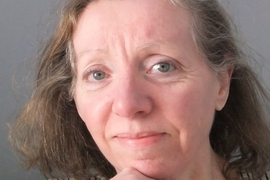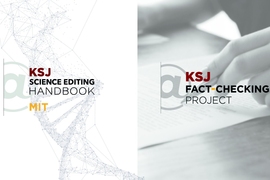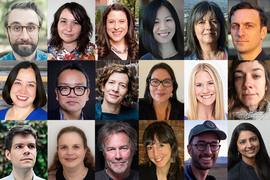The Knight Science Journalism Program at MIT (KSJ) has announced that it has selected a group of 21 distinguished science journalists for its 2021-22 project fellowship class — a cohort that ranges from award-winning freelance writers to staff reporters for outlets such as The Dallas Morning News, The New York Times, and MIT Technology Review.
It marks the second year that KSJ will offer the remote project fellowships, which were established in response to the unique challenges and public health concerns presented by the Covid-19 pandemic. The fellowships are designed to support journalists pursuing a diverse range of projects related to science, health, technology, and the environment. Each fellow will receive a stipend and a budget for project-related expenses, as well as access to seminars, workshops, mentoring, and a large offering of online resources at MIT. (KSJ’s traditional in-person fellowships are expected to resume in the 2022-23 academic year.)
The newly selected fellows will pursue in-depth reporting projects probing issues such as globalization in the artificial intelligence industry, inequities in maternal health, animal lab testing, and environmental justice in the Deep South. “It’s an impressive array of projects that really embodies the multitude of ways our lives are touched by science,” says KSJ Associate Director Ashley Smart. “We’re proud to be able to support so much important work — and the talented journalists who are undertaking it.”
“The Knight Science Journalism Program is honored to contribute to the work being done by this talented group of science journalists,” says KSJ Director Deborah Blum. “It’s a pleasure to see such innovative and insightful work across so many platforms — books, documentary films, podcasts, long-form investigative stories — all with such a promise of making a difference.”
Selected from a highly competitive pool of applicants, the 2021-22 fellowship class includes authors, reporters, documentary photographers, and multimedia journalists representing every time zone in the contiguous United States. Seven journalists will receive full-year fellowships supported by $40,000 stipends; 14 will receive single-semester fellowships supported by $20,000 stipends, with nine in the fall semester and five in the spring semester.
The Knight Science Journalism Program, supported by a generous endowment from the John S. and James L. Knight Foundation, is recognized around the world as the premier mid-career fellowship program for science writers, editors, and multimedia journalists. The program’s goal is to foster professional growth among the world’s small but essential community of journalists covering science and technology, and encourage them to pursue that mission, first and foremost, in the public interest.
Since its founding in 1983, the program has hosted more than 350 fellows representing media outlets from The New York Times to Le Monde, from CNN to the Australian Broadcasting Corporation, and more. In addition to the fellowship program, KSJ publishes the award-winning digital magazine Undark and administers a national journalism prize, the Victor K. McElheny Award, honoring local and regional science reporting. KSJ’s academic home at MIT is the Program in Science, Technology and Society, which is part of the School of Humanities, Arts, and Social Sciences.
2021-22 KSJ Fellows — Full-year fellows
Jessica Camille Aguirre is an award-winning journalist and writer from California. She often covers climate, and is especially interested in how people make and experience extremes. Her work has appeared in The New York Times Magazine, Vanity Fair, Harper’s Magazine, The New York Review of Books Daily, n+1, and many others. Aguirre will be researching and writing about the history of life-support systems.
Rene Ebersole is an award-winning journalist specializing in investigative stories about science, health, and the environment. Ebersole has reported on six continents for publications ranging from National Geographic to Audubon magazine on topics ranging from eel smuggling, health fraud, forensic science, and climate change to suspended animation, microbiomes, and Monsanto's Big Tobacco moment. For her investigative project, Ebersole will examine the troubling legacy of junk science in the criminal justice system.
Lauren Gravitz is an award-winning, independent science journalist based in San Diego whose work has appeared in publications such as The Economist, The Washington Post, Nature, Aeon, and NPR. She writes about everything from cancer to car seats but is particularly interested in neuroscience and the brain, especially memory. For her project, she will be writing about the newly emerging science of forgetting — from molecular biology to cognitive science — and the vital role it plays in our everyday lives.
Karen Hao is the senior AI editor at MIT Technology Review, covering the field’s cutting-edge research and its impacts on society. Her work is regularly taught in universities, including Harvard, Stanford, and Yale, and cited in government reports and by Congress. For her fellowship project, Hao will investigate the global AI supply chain and how it often concentrates power into the hands of wealthy people, companies, and nations while leaving the less fortunate with little privacy, agency, or benefit.
Ferris Jabr is a contributing writer for The New York Times Magazine and Scientific American. He has also written for The New Yorker, Harper’s, The Atlantic, Outside, Wired, Slate, and Foreign Policy, among other publications. Some of his work has been anthologized by the Best American Science and Nature Writing series. Currently, he is writing a book for Random House about the co-evolution of Earth and life, which will be the focus of his KSJ fellowship.
Asha Stuart is a documentary filmmaker and photographer whose work focuses on sociocultural themes, with a focus on people living in marginalized communities and facing injustice in areas such as inequality, public health, and environmental threats. Her work has appeared on National Geographic, CNN, PBS, TIME, Politico, and many other news outlets. For her project, Stuart will undertake a documentary film project investigating the intersection of racial inequality and environmental injustice on African American communities living in the Deep South.
Emily Willingham is a science journalist and author of “Phallacy: Life Lessons From the Animal Penis” (Avery, 2020) and “The Tailored Brain: From Ketamine, to Keto, to Companionship, A User's Guide to Feeling Better and Thinking Smarter” (Basic, 2021). Her work has appeared in The Washington Post, The Wall Street Journal, Aeon, and Undark, among others; she is a regular contributor to Scientific American and Medscape who earned a PhD in biology and completed a postdoc in urology, both after taking a bachelor’s degree in English literature. Willingham's project will focus on the science of adolescence.
2021-22 KSJ Fellows — Fall-semester fellows
Nina Berman is a documentary photographer, filmmaker, author, and professor at Columbia University Graduate School of Journalism. Her books include “Purple Hearts — Back from Iraq,” (Trolley, 2004), “Homeland,” (Trolley, 2008), and “An autobiography of Miss Wish” (2017). Berman’s project, When the Jets Fly, is a multichannel documentary film, photography, and audio report investigating the environmental impact of U.S. military training focusing on Whidbey Island, Washington, and the greater Puget Sound area.
Sam Bloch is a contributing writer at The Counter, where he covers business, environment and culture. He has written for The New York Times, L.A. Weekly, Places Journal, Bloomberg CityLab, and Art in America, among other publications. As a Knight Science Journalism fellow, he will be writing about shade, and its relationship to global warming and inequality, for a book to be published by Random House.
Virginia Gewin is a former soil scientist turned journalist. Based in Portland, Oregon, she writes about food security, land use, climate change, and biodiversity loss for a variety of publications, including Nature, Popular Science, Bloomberg, and Civil Eats. Her reporting has taken her to Malaysia, Peru, Iceland, Scotland, and all over the United States. Her MIT Knight Science Journalism fellowship project will focus on whether the United States is prepared for another Dust Bowl event.
Jeremy Hance is a writer and freelance environmental journalist. He is the author of the 2020 award-winning travel memoir, “Baggage: Confessions of a Globe-Trotting Hypochondriac.” As a journalist, Hance cut his teeth at Mongabay as a lead writer and editor. A story on the Sumatran rhino for Mongabay was chosen for “Best American Science and Nature Writing” in 2019. Hance will be working on a book about the effort to save one of the world’s most endangered megafauna, the Sumatran rhino.
Melanie D.G. Kaplan is a freelance journalist in Washington. She writes about science, travel, and animals and is a regular contributor to The Washington Post and National Parks Magazine. Kaplan will embark on a road trip with her beagle Hammy, who spent four years in a testing lab, to explore the use of dogs and other animals in testing across America — a journey that will take them to laboratories, universities, pharmaceutical companies, and the homes of other former lab animals. She plans to share their story in a book.
Tasmiha Khan is a freelance writer from the Midwest. She champions marginalized communities, particularly the Muslim American population, including women and children. Her work has appeared in National Geographic, The New York Times, Forbes, The Daily Beast, Vox, and VICE, among others. Her project will be examining the science of ensuring cultural and religious competent care for pregnant and perinatal Muslim women.
Emily Mullin is an award-winning science journalist who writes about how biology is shaping our future. She’s held staff positions covering biotech at Medium’s OneZero and MIT Technology Review and her reporting has also appeared in The Washington Post, Scientific American, and National Geographic. For her project, Mullin is working on a book on the quest to use animals as a source of organs for people who desperately need transplants.
Natasha Singer is a reporter at The New York Times whose work focuses on the intersection of business, technology, and society. She was part of a team of Times journalists who won a George Polk Award for national reporting in 2019 for their privacy coverage. For her project, Singer will examine the historical parallels and differences between the Cold War push for physics education in U.S. high schools in the 1950s and current efforts by tech companies and nonprofits to normalize computer science education in American public schools.
Jared Whitlock is a freelance health reporter. His work has appeared in publications such as The New York Times, Wired Magazine, and Voice of San Diego, with support from USC Annenberg Center for Health Journalism and Investigative Reporters and Editors. He previously covered biotech and health care as a staff reporter at the San Diego Business Journal, was the associate editor of the Encinitas Advocate, and a staff reporter at The Coast News. His project will cover drug development for rare diseases.
2021-22 KSJ Fellows — Spring-semester fellows
Rebecca Boyle is an award-winning science journalist and author based in Colorado Springs, Colorado. She is a frequent contributor to Scientific American, Quanta, and The New York Times, and is a contributing writer at The Atlantic. Boyle is a former newspaper reporter and now writes primarily about astronomy, astrophysics, and astrobiology. She will use her fellowship to pursue a book on the history and biology of darkness, illuminating the nexus among human health, ecological health, and artificial light.
Anna Kuchment is a science reporter at The Dallas Morning News and contributing editor at Scientific American. Previously, she worked as a senior editor at Scientific American and as a staff writer at Newsweek. During her fellowship Kuchment will work on “Shaky Ground: The Untold Story of the Largest Earthquake Surge in Modern History” (University of Chicago Press), about earthquakes and the fracking boom. She is co-writing the book with Boston College historian of science Conevery Bolton Valencius.
Julia Rosen is an independent journalist covering science and the environment from Portland, Oregon. She writes about how the world works and how humans are changing it. Her work has appeared in The New York Times, The Atlantic, National Geographic, Science, High Country News, and many other publications. Her feature on invasive earthworms was anthologized in the 2021 edition of “The Best American Science and Nature Writing.” Rosen’s project will explore the origins of Earth's grasslands and the threats they face today.
Hilke Schellmann is an Emmy-award-winning reporter and journalism professor at New York University. Her work has appeared in The New York Times, The Wall Street Journal, MIT Technology Review, PBS/Frontline, HBO, VICE, National Geographic, and The Atlantic. For her fellowship project, Schellmann will report on artificial intelligence and health data in education, and employment for MIT Technology Review and for an upcoming book with Hachette.
Sushma Subramanian is a health and science journalist and author of “How to Feel: The Science and Meaning of Touch.” Her byline has appeared in Slate, The Atlantic, Elle, Scientific American, Discover, and others. She has twice been a finalist for the Livingston Award for Young Journalists and won a Newswomen's Club of New York Front Page Award. She will be writing about the ethics behind the commodification of breast milk.









